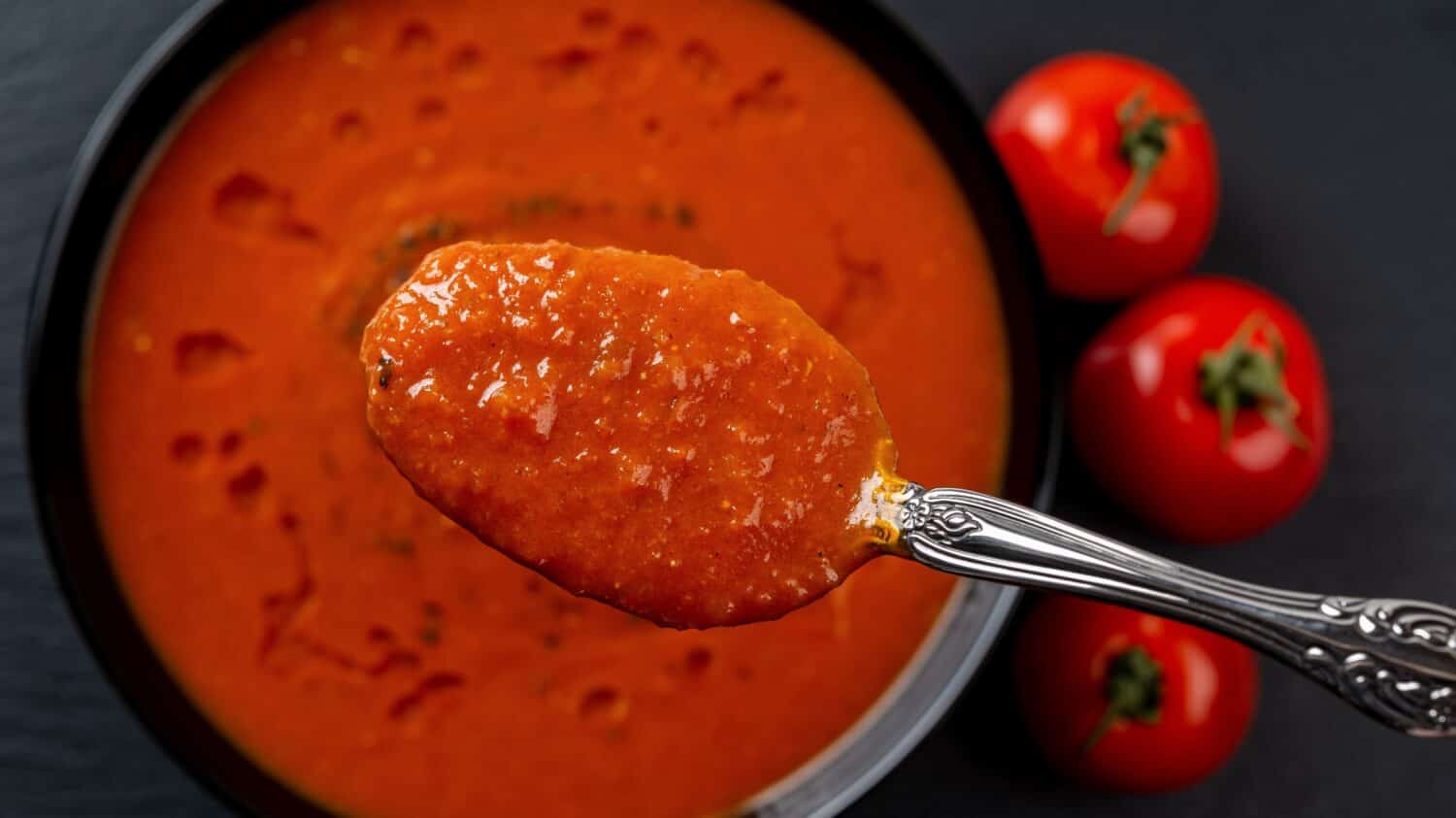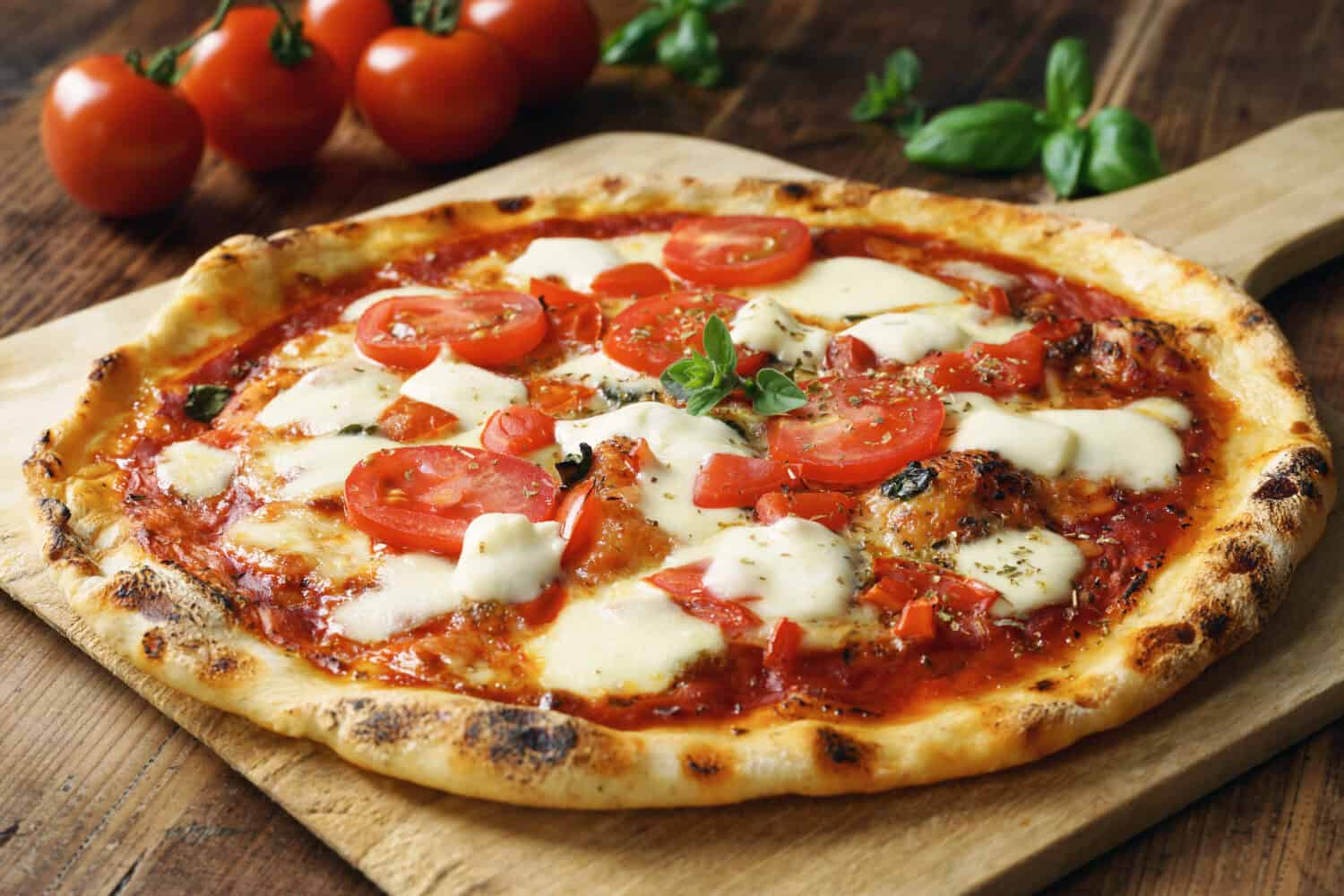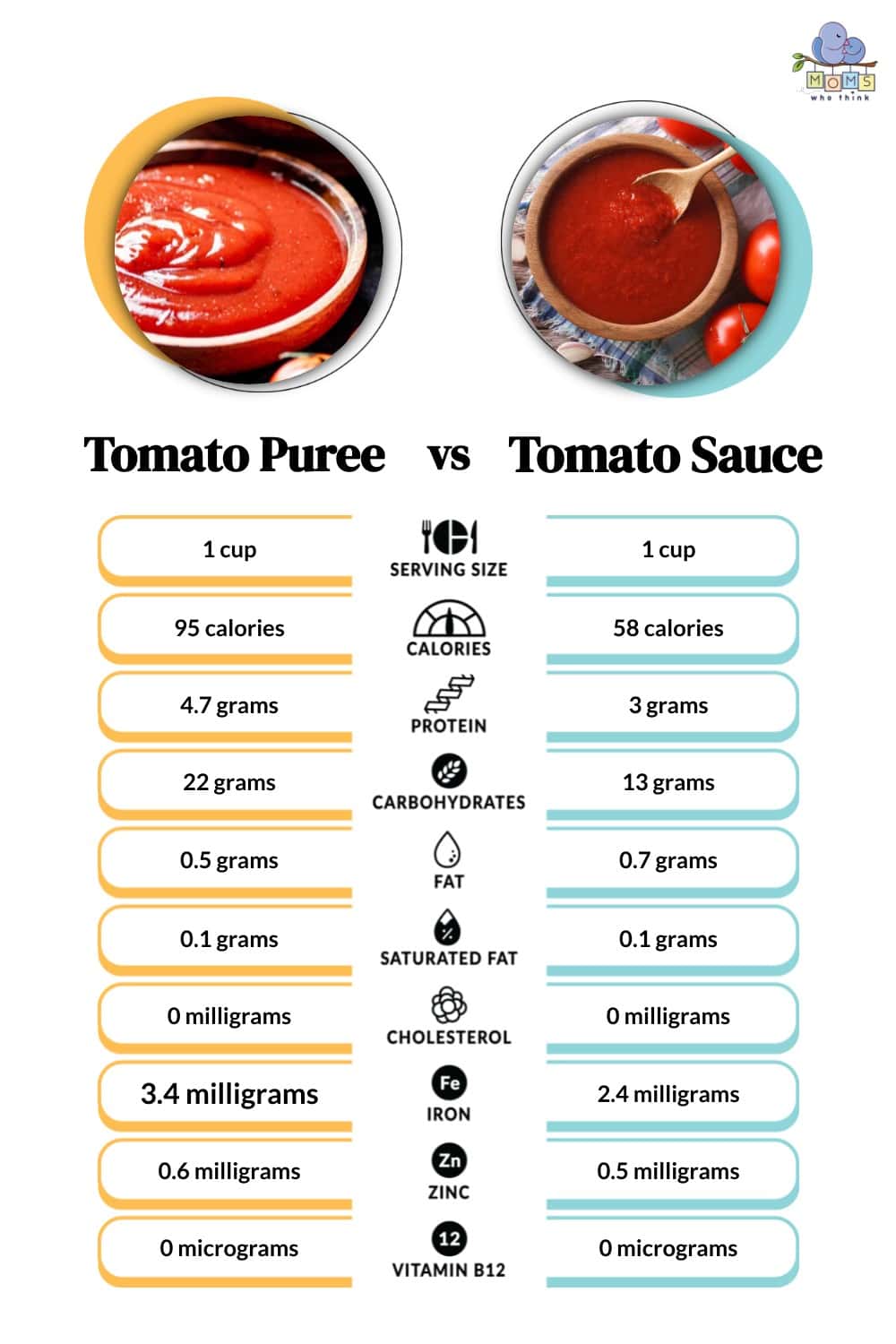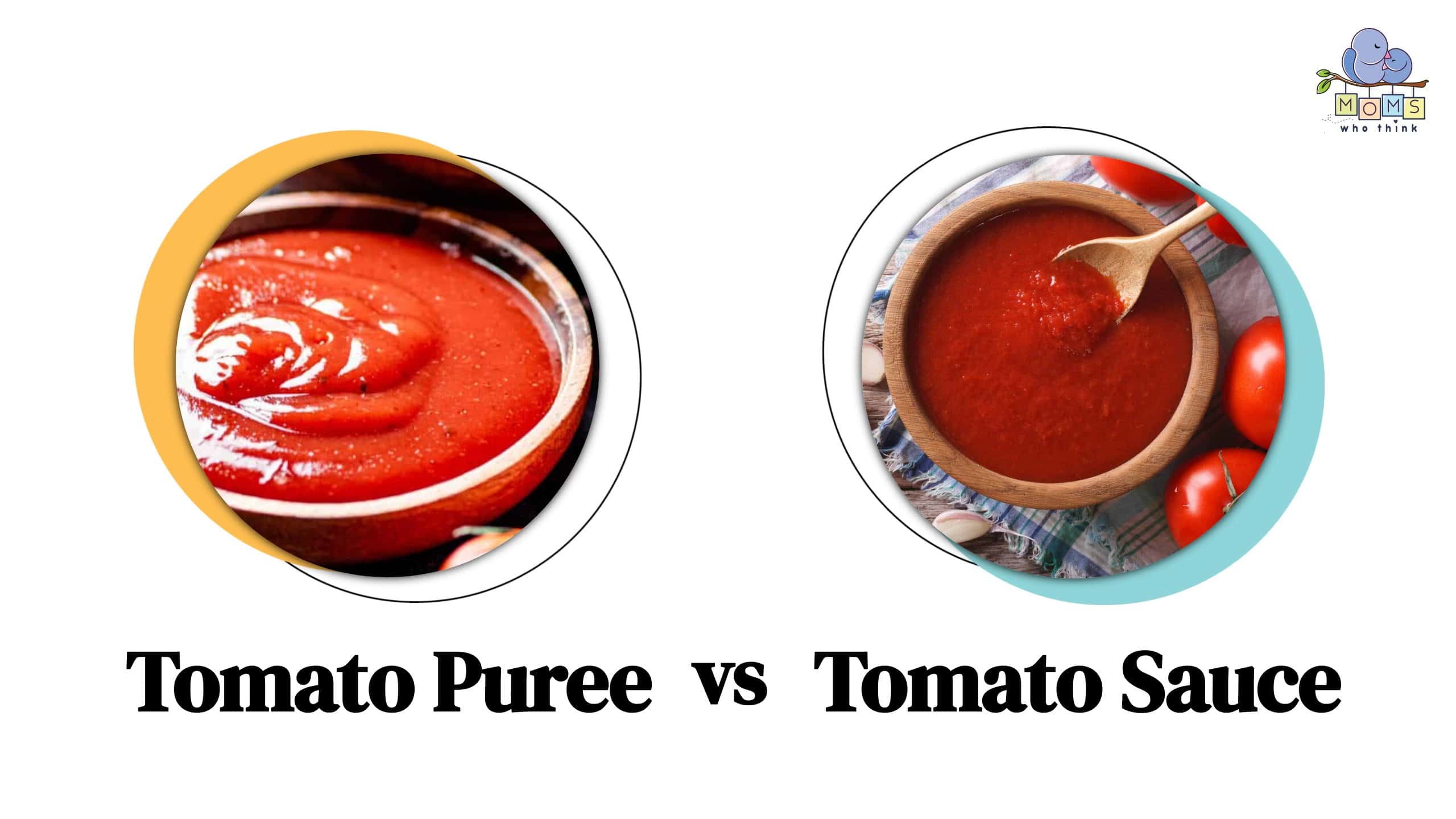Do you really need to know the difference between tomato puree vs. tomato sauce? In short yes – if you love to cook or simply enjoy a good tasty meal! These kitchen staples are a fixture in American household pantries ready to elevate our dishes. While they can often serve as substitutes for one another, the contrasts are noteworthy. Tomato puree boasts a thicker consistency and a robust flavor profile, while tomato sauce tends to lean towards sweetness.
However, these distinctions are just the tip of the culinary iceberg. How do you best utilize them in your cooking? Are there other nuances that can enhance your dishes? This article is your guide to unlocking the full potential of these tomato-based wonders.
What is Tomato Puree?
Tomato puree or passata, is a thick, smooth liquid that is created by cooking tomatoes and then blending them to a fine consistency. They are strained with the option of adding salt. The result is a milder taste compared to other tomato sauce. It's a versatile key ingredient in various dishes, and adds body to soups and stews, sauces, and curries, without overpowering the overall flavor of the recipe.
What is Tomato Sauce?
Open up a can of tomato sauce and tomato puree and you will see one is thinner than the other. Tomato sauce is also made by cooking and straining the tomatoes. However, tomato sauce is smoother, thinner and often seasoned with various ingredients like herbs, spices, onions, and garlic to enhance the flavor. Tomato sauce is a key ingredient in pasta sauce and other dishes like pizza, lasagna, and meatballs. It is super convenient and must-have pantry staple when you want a quick and tasty sauce for your dishes.

©Maryia_K/Shutterstock.com
Tomato Puree vs. Tomato Sauce: Backstory
You may find it a surprise to know that neither tomato puree nor sauce originates in Italy. They actually have their origins in Central and South America, where people used tomato sauce as a base for lots of different dishes. But there's a bit of a mystery because a lot of the history of food in Mexico, especially before European explorers like the Spanish arrived, got lost or erased over time.
Tomato Puree vs. Tomato Sauce: How to Make Each
Making tomato puree or tomato sauce at home is a straightforward process that allows you to enjoy the natural flavors of fresh tomatoes while having control over the ingredients.
Basic Tomato Puree Recipe:
Ingredients
Ripe tomatoes (any variety will work)
Water (for blanching)
Equipment
Knife
Cutting board
Large pot
Slotted spoon
Blender or food processor
Fine-mesh strainer or cheesecloth (optional)

©V. Matthiesen/Shutterstock.com
Instructions
Step 1: Prepare the Tomatoes
Wash the tomatoes thoroughly under running water to remove any dirt or debris.
Step 2: Blanch the Tomatoes
Fill a large pot with water and bring it to a boil.
Using a knife, make a small “X” on the bottom of each tomato. This will help with peeling.
Carefully place the tomatoes into the boiling water for about 30 seconds to 1 minute until you see the skin starting to peel away.
Use a slotted spoon to transfer the tomatoes to a bowl of ice water immediately. This will stop the cooking process and make it easier to peel the tomatoes.
Step 3: Peel the Tomatoes
Once the tomatoes have cooled in the ice water, you can easily peel off the skins starting from where you made the “X” with your knife.
Step 4: Remove Seeds and Core (This is an optional step)
If you prefer a smoother puree without seeds and the tough core, cut the peeled tomatoes in half horizontally and gently squeeze out the seeds and core. Discard them.
Step 5: Blend the Tomatoes
Place the peeled and deseeded tomatoes into a blender or food processor.
Blend until you achieve a smooth, even consistency. If you're making a larger batch, you may need to blend in batches.
Step 6: Strain (This is optional)
If you want an ultra-smooth tomato puree, you can strain the blended mixture through a fine-mesh strainer or cheesecloth to remove any remaining seeds or pulp. This step is optional and depends on your preference.
Step 7: Store or Use
Transfer the tomato puree to a container with an airtight lid. You can use it immediately in your recipes or store it in the refrigerator for a few days. For longer storage, you can freeze it in freezer-safe containers or ice cube trays for individual portions.
You can also give tomato puree a deep, tangy taste by mixing ripe tomatoes, salt, and citric acid (like lemon juice) in a blender or food processor. Feel free to customize it to your liking with your favorite herbs and seasonings. Enjoy your fresh tomato puree in soups, pasta or any of your favorite recipes.
Why Make Them From Scratch?
Simply put because it’s easy and allows you to tap into your creativity to make a variety of purees and sauces with a twist! Also, you can control the amount of sodium unlike canned tomato products.
Tomato Puree vs. Tomato Sauce: Nutritional Comparison

Basic Tomato Sauce Recipe:
Ingredients
2 pounds (about 900 grams) of ripe tomatoes (plum tomatoes like Roma tomatoes work well)
2 tablespoons of olive oil
1 medium onion, finely chopped
3-4 garlic cloves, minced
1 teaspoon of sugar (optional, to balance acidity)
Salt and pepper to taste
Fresh basil leaves (optional, for added flavor)
Instructions
Step 1: Prep the Tomatoes
Start by preparing the tomatoes. If you want a smoother sauce, you can peel the tomatoes by making a small “X” on the bottom of each tomato, blanching them in boiling water for about 30 seconds, and then transferring them to an ice water bath. The skins should peel off easily. However, you can skip this step if you prefer a chunkier sauce with the tomato skins.
Step 2: Dice the Tomatoes
Cut the tomatoes in half and remove the seeds. Then, chop the tomatoes into small pieces. If you prefer a smoother sauce, you can also blend the tomatoes in a food processor or blender.
Step 3: Sauté the Onions and Garlic
Heat the olive oil in a large saucepan or skillet over medium heat. Add the chopped onions and cook until they become translucent, about 5 minutes. Stir in the minced garlic and cook for an additional minute, being careful not to let it brown.

©ZouZou/Shutterstock.com
Step 4: Cook the Tomatoes
Add the diced or blended tomatoes to the saucepan with the onions and garlic. Stir well to combine. If you're using whole tomatoes, you can crush them with a wooden spoon as they cook.
Step 5: Season and Simmer
Season the sauce with salt, pepper, and a teaspoon of sugar to balance the acidity of the tomatoes. You can also add fresh basil leaves at this point for extra flavor. Lower the heat to a simmer, cover the saucepan, and let it cook for about 30-45 minutes, stirring occasionally. The longer it simmers, the richer the flavors will become.
Step 6: Adjust the Consistency
If you find that the sauce is too thick, you can add a bit of water or vegetable broth to achieve your desired consistency. Conversely, if it's too thin, you can continue simmering it uncovered to thicken it.
Step 7: Taste and Adjust
Taste the sauce and adjust the seasonings if necessary. You can add more salt, pepper, or sugar to suit your taste.
Step 8: Serve or Store
Once the sauce reaches your desired consistency and flavor, it's ready to serve. You can use it immediately over pasta, pizza, or other dishes. Alternatively, let it cool and store it in an airtight container in the refrigerator for a few days or freeze it for longer storage.
This homemade tomato sauce is versatile and can be used in a wide variety of recipes, from pasta dishes to meatball subs and more. Adjust the seasonings and ingredients to suit your taste and experiment with additional herbs and spices for a unique flavor profile. Enjoy your delicious homemade tomato sauce!
Final Thoughts
Grocery stores and specialty markets offer a variety of tomato purees and tomato sauces. Tomato puree is a versatile, thick neutral base for various dishes such as soups, pasta and curries, while tomato sauce offers ready-made flavor for quick pasta sauces and classic Italian and Latin dishes. Both are kitchen staples in many households, making cooking easier and tastier. Which is your favorite kitchen go-to?
Amazing Recipes with Tomato Sauce
Spaghetti with Turkey Meatballs in Spice Tomato Sauce
Eggplant and Tomato Sauce with Pasta
Parmesan Chicken Fingers with Warm Tomato Dipping Sauce
Mouth-Watering Recipes with Tomato Puree
Vegetarian Enchilada Casserole
Quick and Easy Sloppy Joes from Scratch

